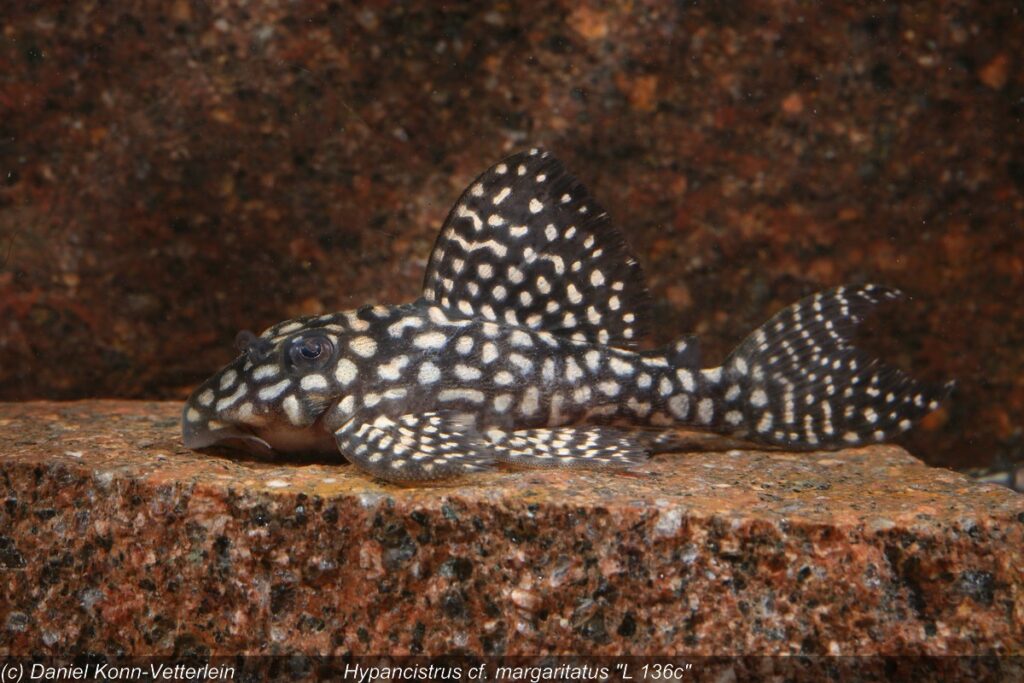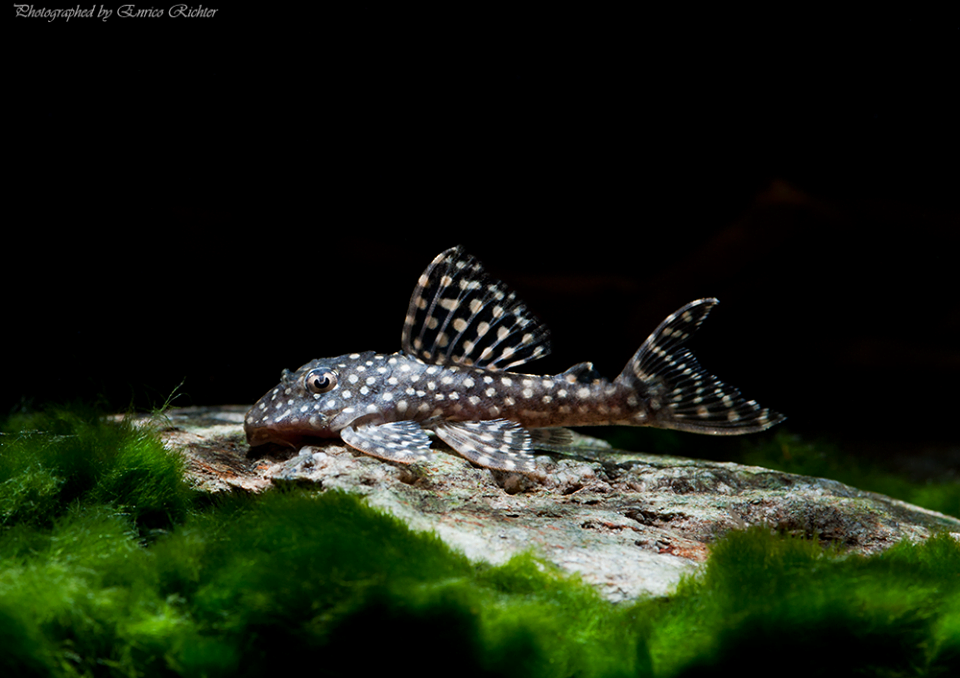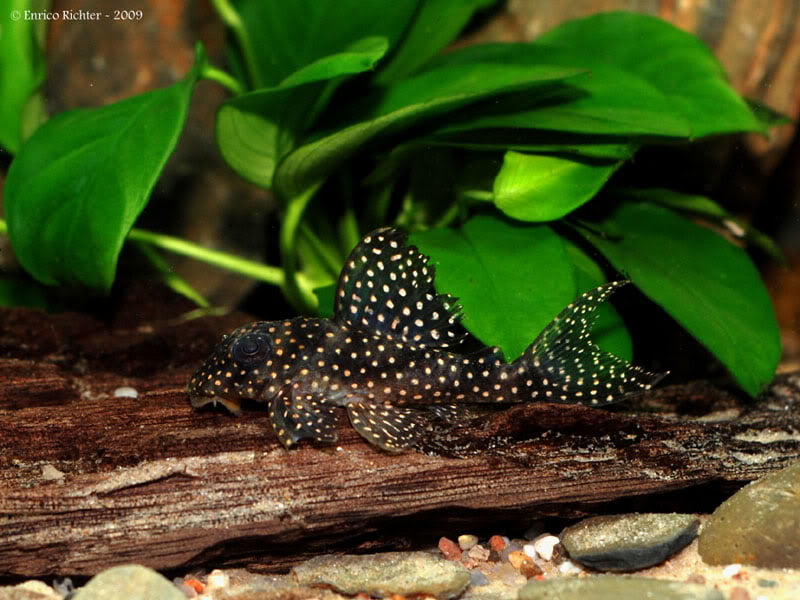







The number of Plecos showing white spots on a dark background is enormous. Clearly this pattern works very well for species of Loricariidae. Among Hypancistrus species, there are several species or forms with this appearance. One of them is L136 from Rio Negro, Brazil. Like most Hypancistrus it’s an easy to keep and breed species that even beginners should be able to take well care of. L136 is not as common in the hobby as it once was, but it is currently allowed for export from Brazil. In recent years, it has experienced something of a resurgence due to a breeding form called L136c, which has very large white spots.
Facts:
Name: Hypancistrus cf. margaritatus
Trade names: Demini Angelicus Pleco, L136, L136a, L136b, L136c, L158, LDA5, LDA6
Origin: Rio Demini (Rio Negro system), Brazil.
Maximum size: 12 cm / 5”
This species is naturally variable in its pattern (as with most Hypancistrus), which has led to it being one of a few L-numbers given additional letters behind the number to separate the forms. L136a has the smallest, most numerous spots, L136b is the in between form and L136c has few, big spots that may not even be circular. L158 is a somewhat forgotten number, but the original fish shows a specimen with small spots that are not as numerous as the normal version of the species (L136a). Captive breeding has shown that two L136a parents can produce offspring that displays the pattern of the other varieties.
It may belong to the same species as H.margaritatus (L404), which was described by Tan & Armbruster in 2016. L404 is from Rio Tacutu, which is connected to the Rio Negro system.
They need an aquarium set up consisting of lots of hiding places in the form of rocks, wood and of course specially made caves that suit their measurements. In these the males will eventually guard their offspring. They prefer water that is warm (27-30 C), soft and slightly acidic. Most of all it should be well oxygenated and clean, so a good filtration system and frequent water changes are essential. Among themselves they are peaceful, although males may quarrel for caves and females can sometimes be badly injured or even killed during the breeding-trapping in the male’s cave. Males develop longer odontodes on their pectoral fins and on their cheeks and have broader heads. Hypancistrus are mostly carnivorous, so a selection of crustaceans, insect larvae and fish meat should be offered along with high quality dried foods that also contain some vegetable matter. Due to the conditions in its natural habitat, breeding of L136 is most successful in water with a very low hardness.
More info:
